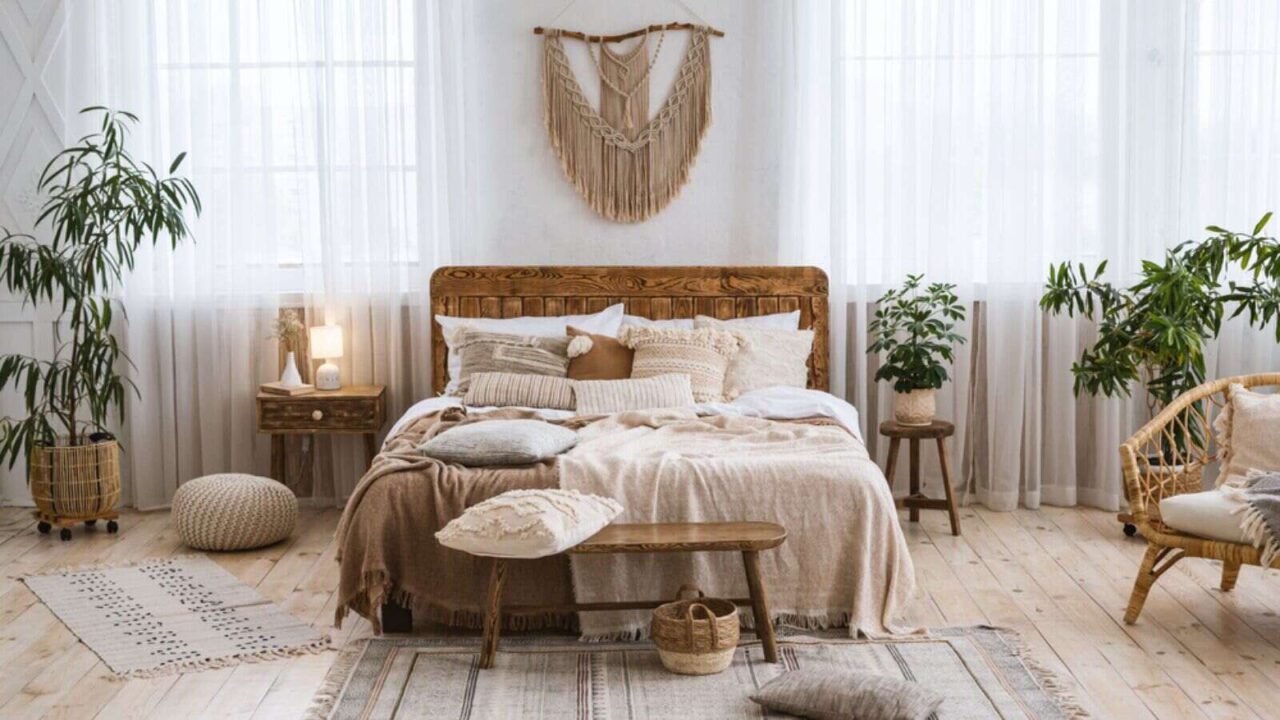
Colors for a Relaxing Bedroom
Pablo Picasso once said, “Colors, like features, follow the changes of the emotions.” The relationship between your bedroom’s color scheme and your mood is crucial.
By understanding this connection, you can create a sleep space that enhances your well-being. Here’s how you can incorporate feel-good colors into your bedroom to create a serene and relaxing atmosphere.
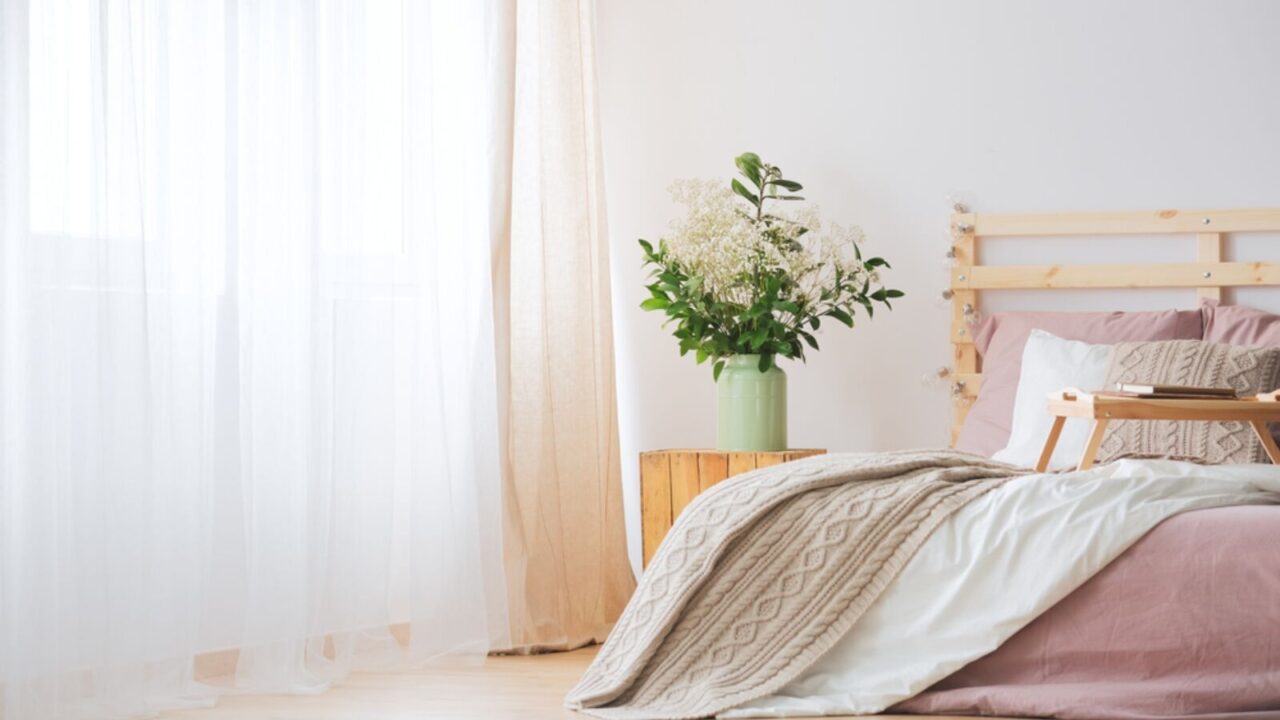
Light Pastels
Pastels are ideal for bringing a serene atmosphere to your room. Shades like pale peach and mint green can brighten a room without overwhelming it.
These soft hues have a calming effect on the mind, reducing stress and promoting relaxation. Use them in wall colors, bedding, and décor accents for a cohesive look.
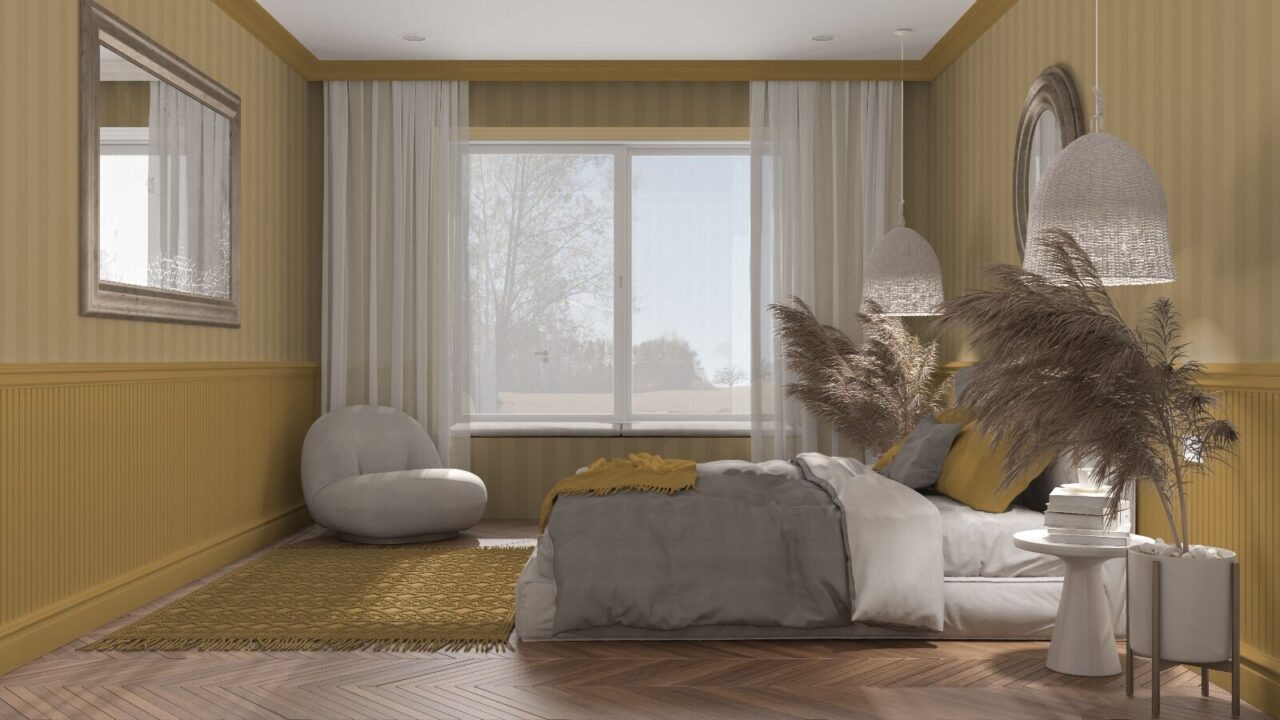
Buttercream
Buttercream, a soft yellow shade, adds a warm, inviting glow to any room. Unlike the brighter shades of yellow, it creates a tranquil environment without feeling overwhelming.
Incorporate buttercream through walls, pillows, curtains, or bedding for a cozy yet sophisticated touch. This muted tone can make your bedroom feel both welcoming and serene.
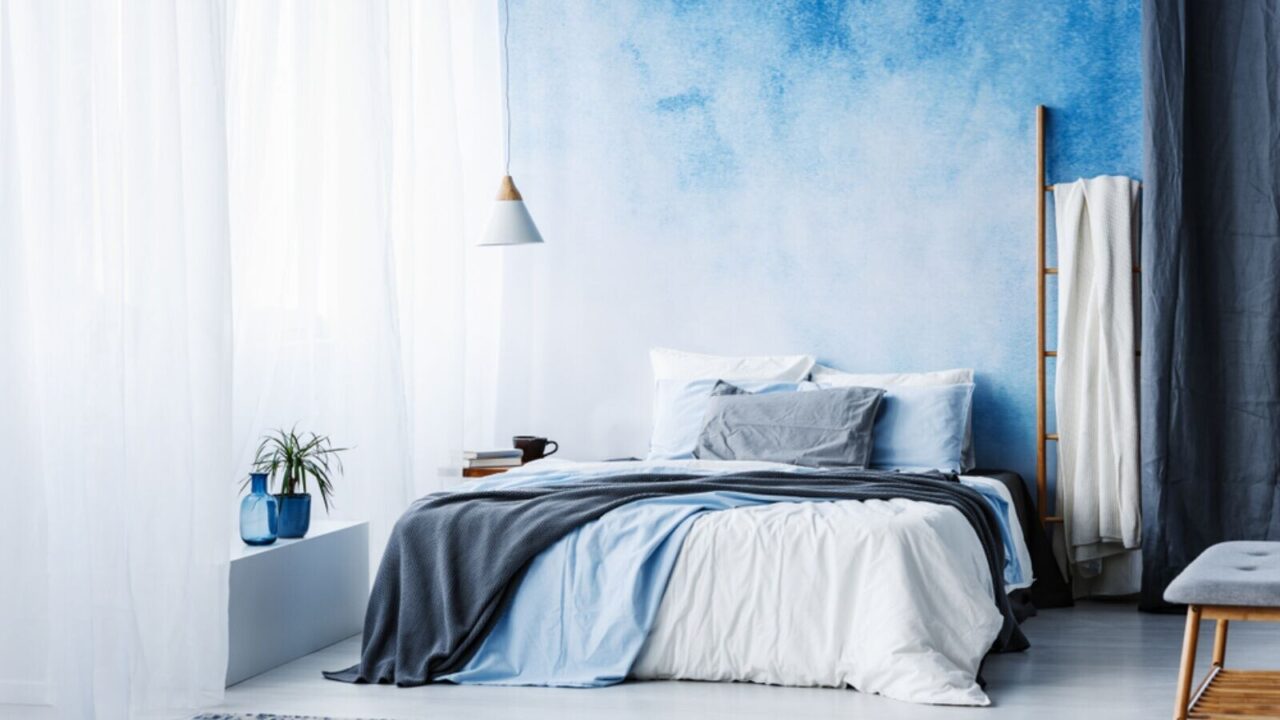
Bring Calm With Blue
Soft blue hues are perfect for fostering a calm environment. If you struggle with sleep, introducing blue into your bedroom can be especially beneficial.
Blue walls or accents can promote a sense of tranquility, making it easier to relax. This color is especially effective in spaces dedicated to unwinding, such as reading nooks or meditation areas.
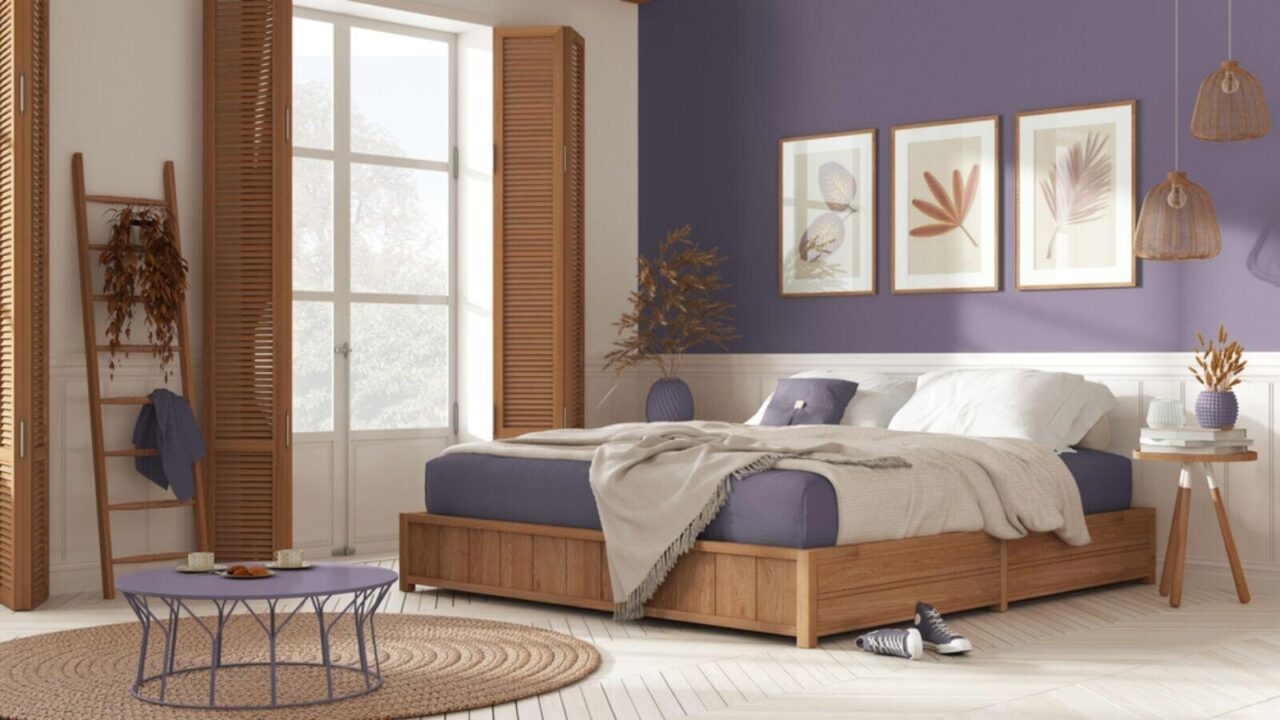
Purple and Creativity
Purple is a great color to boost creativity, particularly if you’re feeling stuck. It stimulates brain activity, helping you think more creatively.
Opt for purple walls or accents in your bedroom to spark imagination and innovation. For a softer look, lavender can offer the benefits of purple without being too bold.
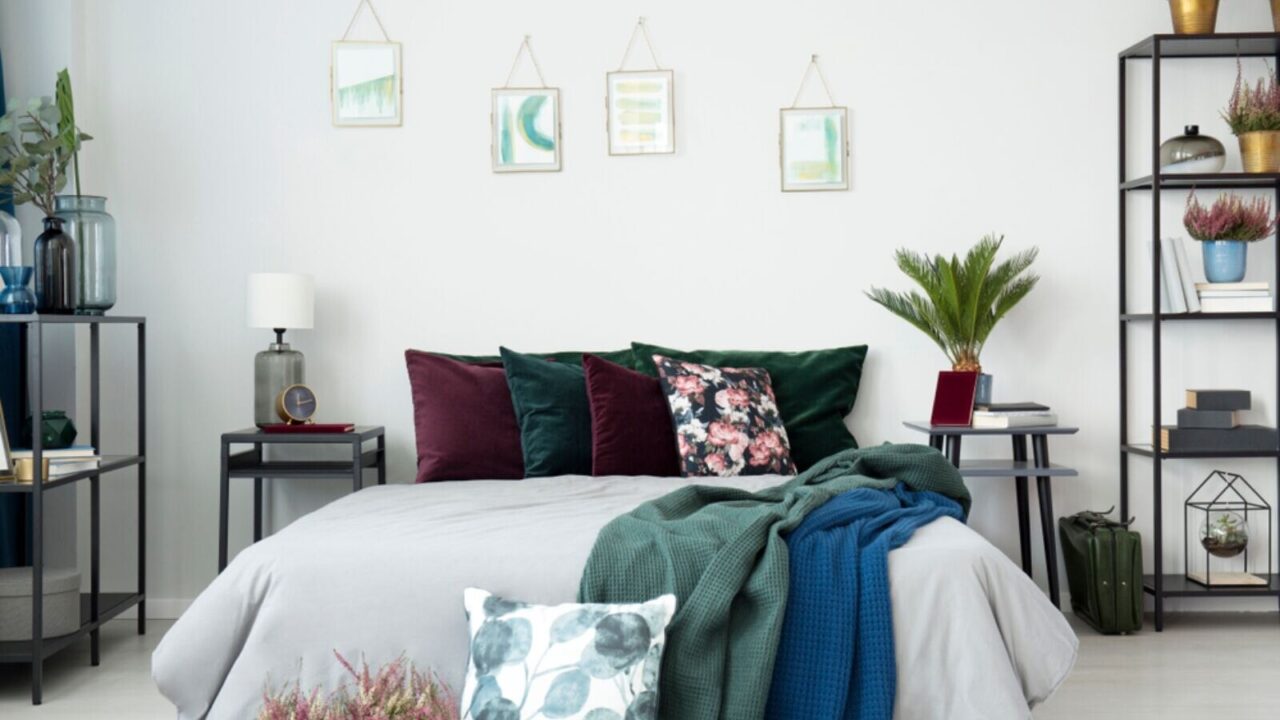
Balance With Green
Green is known for its calming effects, reminiscent of nature’s tranquility. It aids in maintaining focus and can be especially helpful in today’s fast-paced digital world.
Consider shades like sage or mint green to create a peaceful and focused bedroom environment. These colors can help you stay grounded and connected to nature.

Layering Technique
Layering different patterns and colors is an effective way to add depth and interest to your bedroom. Start with a dominant color and then introduce complementary shades in smaller doses.
This technique creates a visually appealing space that doesn’t feel monotonous. Mixing blue, white, and yellow, for example, can achieve a balanced and engaging look.

Barbie Core
Pink has been trending for quite some time now. It creates a sense of security and encourages positive vibes, making it a great choice for bedrooms.
Use pink in your walls, furniture, and décor to create a nurturing environment. This color promotes emotional fulfillment and can be especially soothing.
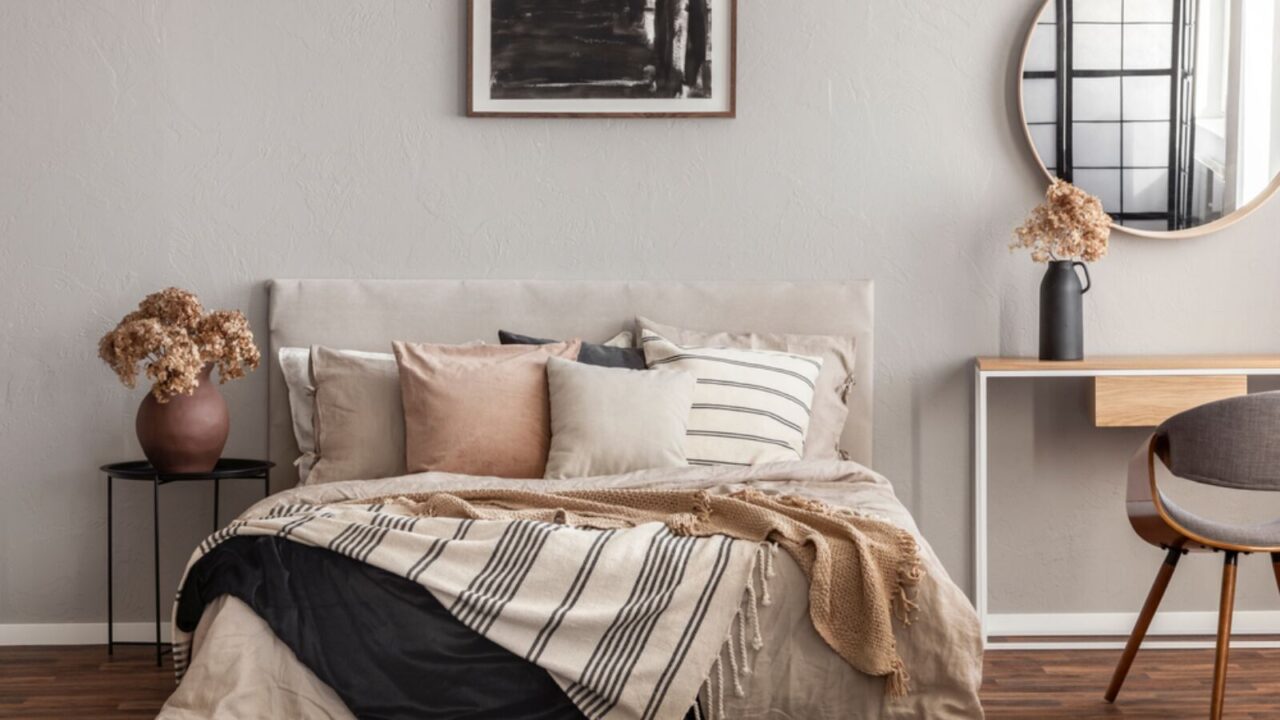
Embrace Simplicity With Beige
Beige is a versatile color that promotes relaxation and reduces anxiety. It helps create a balanced, serene space, perfect for unwinding after a long day.
Beige walls or accents can set a calming tone in your bedroom, making it an ideal backdrop for rest. Pair it with soft textures to boost the cozy feel.
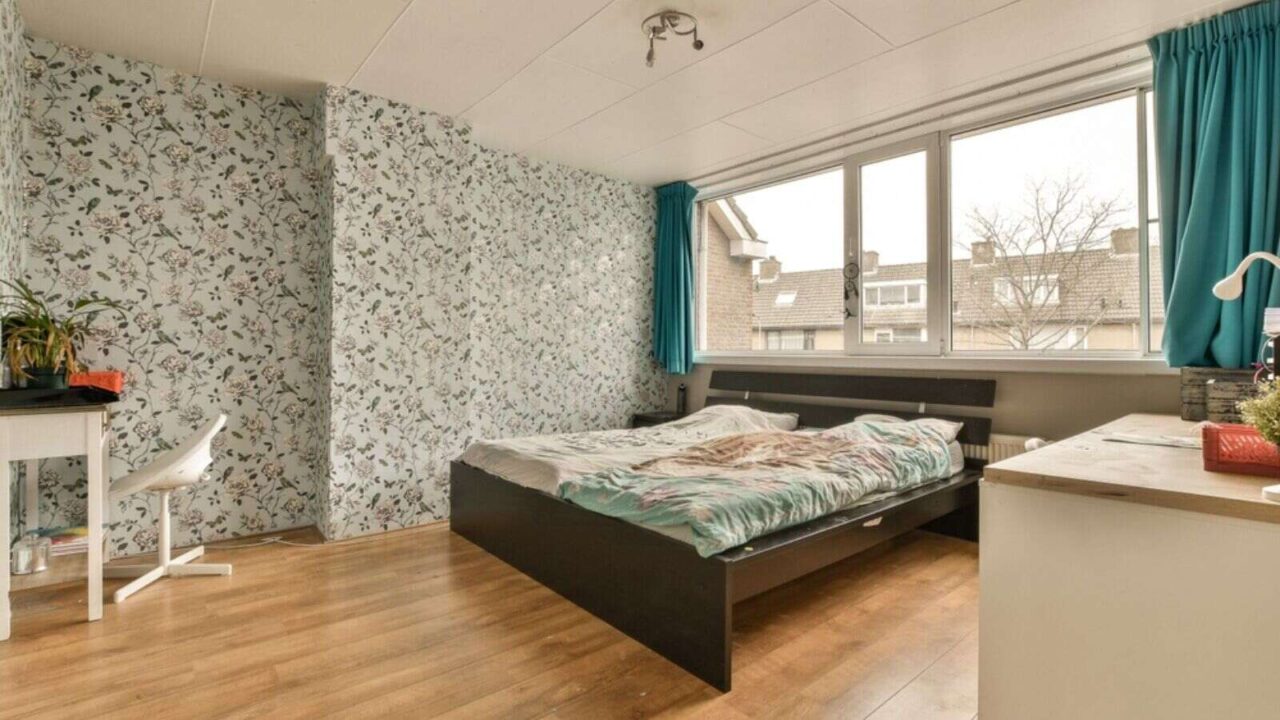
Monochromatic Scheme
A monochromatic color palette can make your bedroom both cohesive and sophisticated. Choose a base color and introduce lighter or darker shades throughout the room.
This approach prevents visual clutter and promotes a sense of harmony. Softer hues in a monochromatic scheme are particularly effective for creating a relaxing and creative space.

Turquoise Zen
Turquoise, a blend of blue and green, offers a refreshing and serene ambiance. This shade supports emotional stability and helps you feel centered.
If you meditate in your bedroom, consider turquoise for the walls to enhance mental clarity. It’s also a great choice for creating a peaceful environment overall.
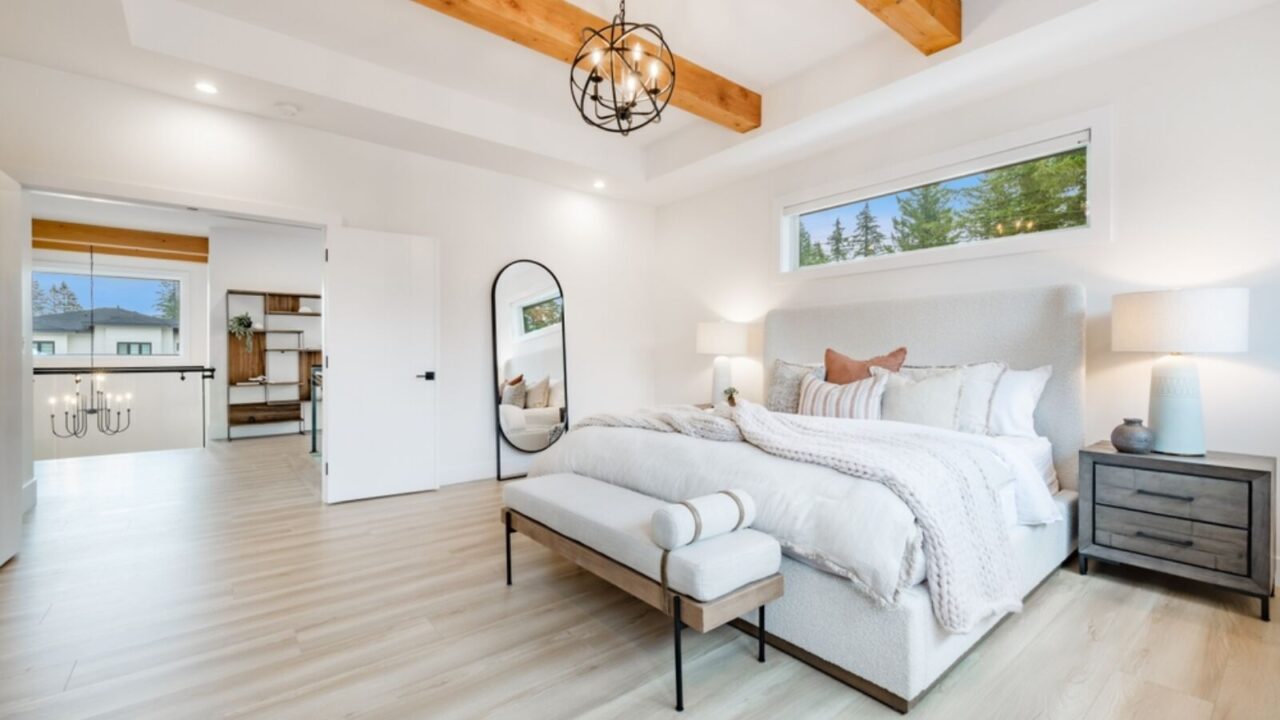
Refocus With White
White is known for its ability to create a clean, open environment, ideal for mental clarity. If your mind is constantly active, introducing white into your bedroom can help create a calming space.
However, to avoid a sterile look, mix in varying textures and patterns. This balance ensures your room feels inviting rather than stark.

Seasonal Shades
Seasonal colors can bring a sense of harmony between your bedroom’s interior and the outside world. Spring invites renewal with mint greens and light blues, while fall embraces cozy vibes with warm yellows and browns.
Adapting your bedroom colors to the season can enhance your connection with nature and the time of year. This approach also keeps your space feeling fresh and in tune with the changing environment.
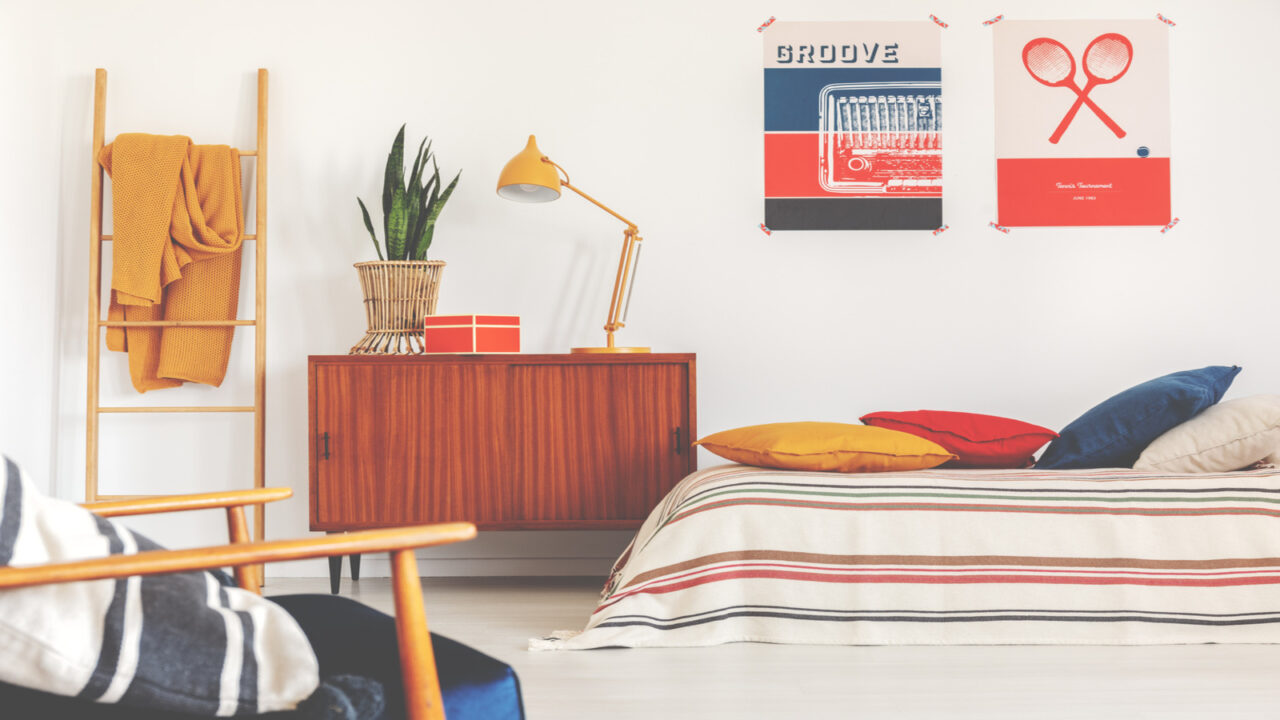
Colors to Avoid
To maintain a serene bedroom, it’s important to avoid colors that might disrupt tranquility. Bold shades like bright red, orange, and dark blue can make a space feel overwhelming or gloomy.
Red, for example, is intense and may create a sense of agitation. Choosing more subdued colors can help maintain a calming atmosphere in your bedroom.
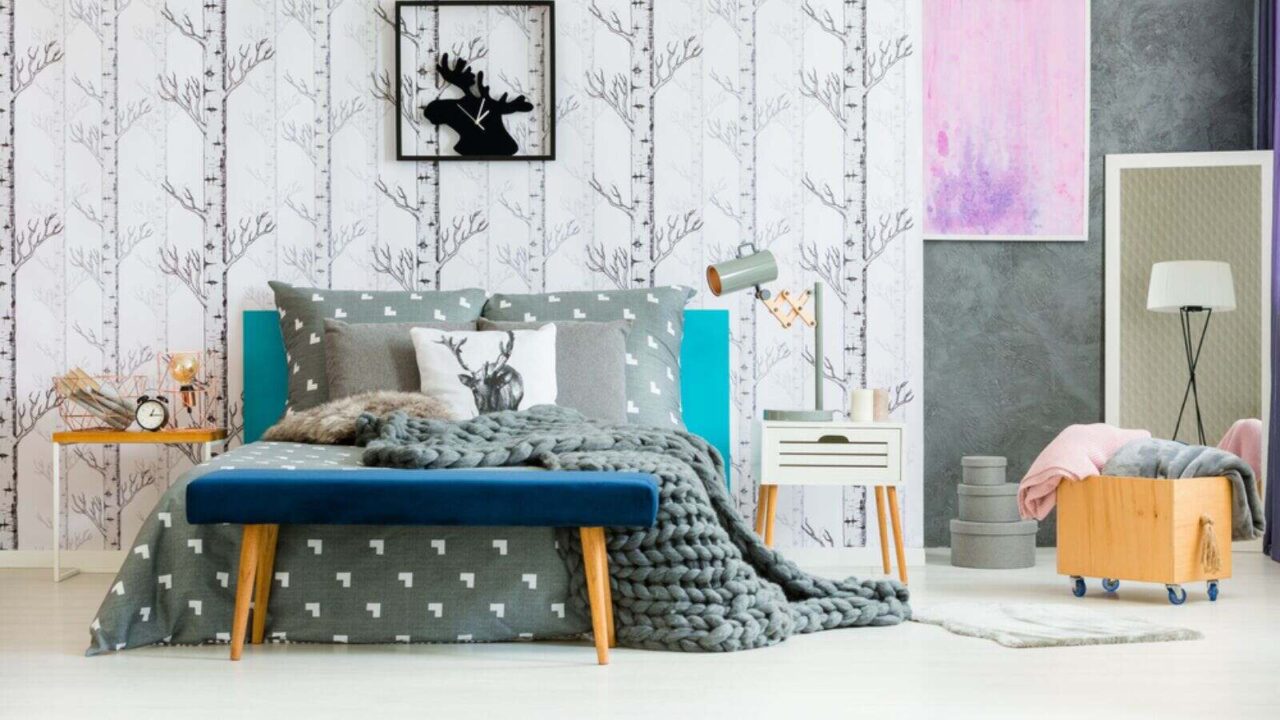
Color Psychology
Understanding color psychology is key to creating a bedroom that positively influences your mood. Different colors evoke various emotions, impacting how you feel and interact with your environment.
For instance, warm tones can energize, while cool tones tend to soothe. By selecting colors that align with the desired mood of your space, you can create a room that enhances your well-being.
If you want a detailed guide on how colors can affect you, take a look at the impact of color on mood in home decor.
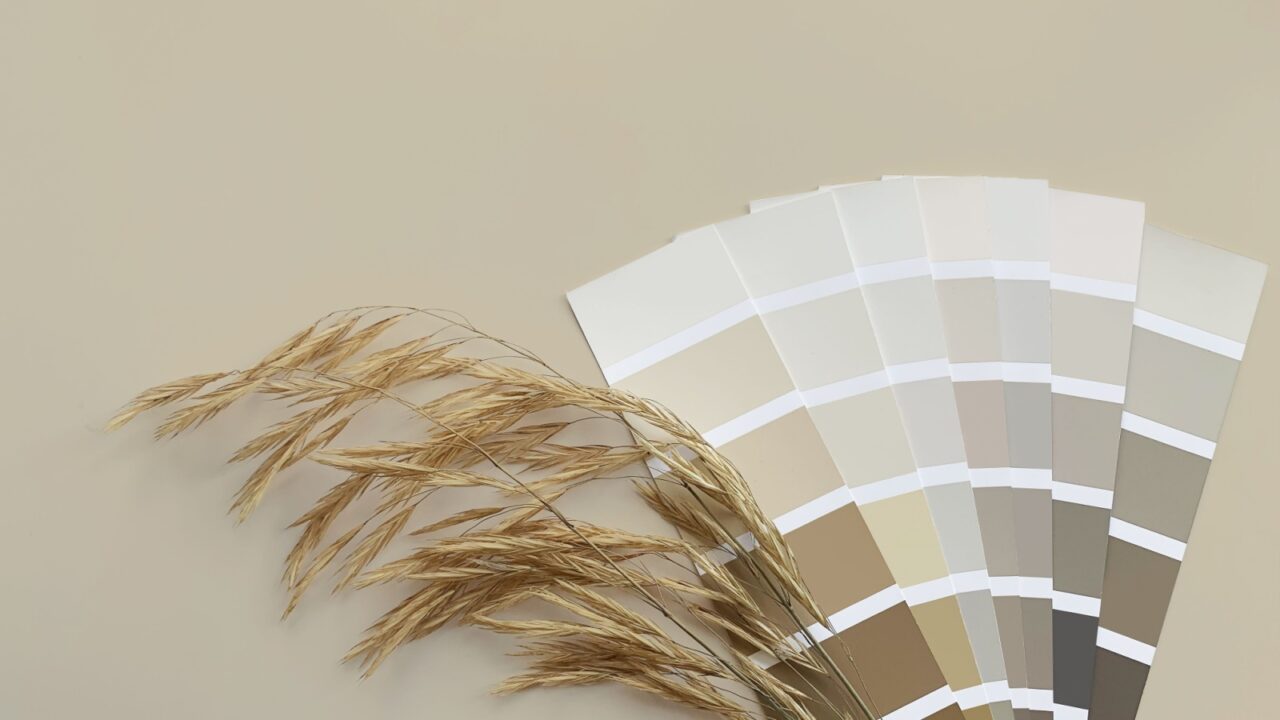
Personal Color Palette
Your bedroom should reflect your personal taste and emotional needs. Colors that bring joy to others might not have the same effect on you.
Consider how different hues make you feel, and choose a palette that supports your emotional well-being. This fall, take the opportunity to transform your bedroom into a personal space that feels just right for you.
Before you begin, it’s essential to clear up any misconceptions about fall color schemes. Exploring popular myths about fall color palettes can give you a better understanding of how various shades work together.